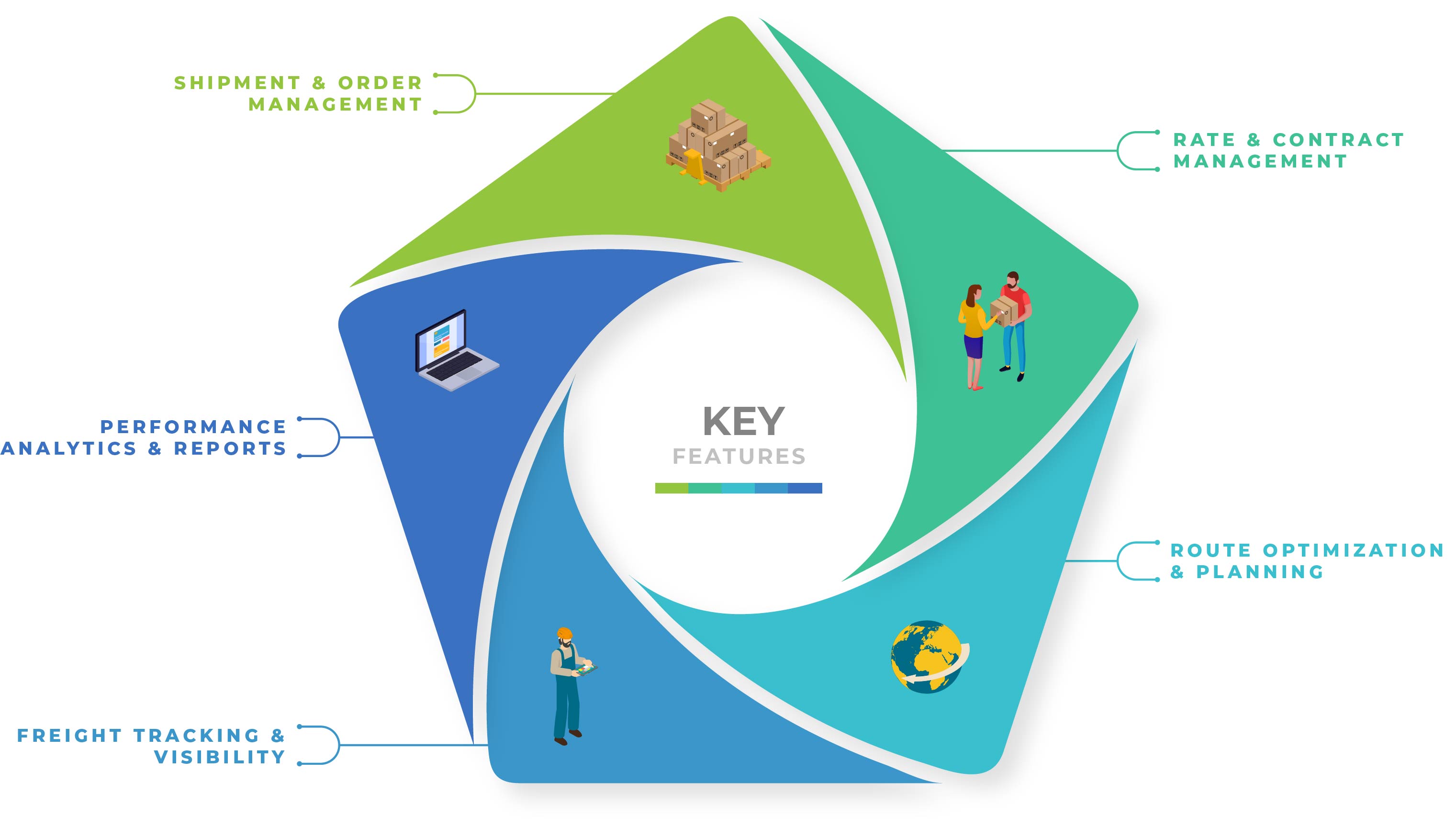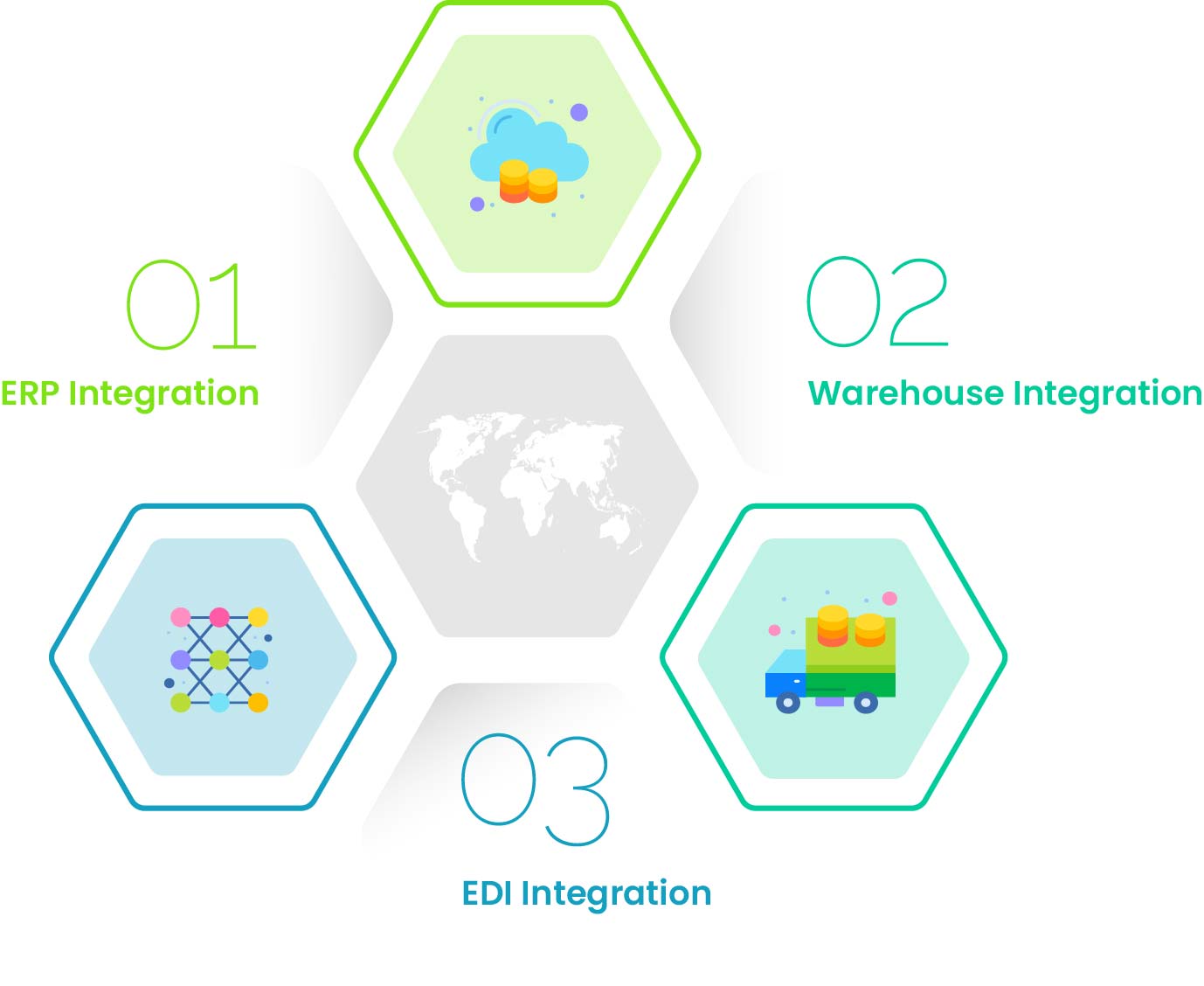About the TMS Freight
A TMS Freight Management System refers to a comprehensive software solution specifically designed to streamline and optimize freight operations within the logistics industry. It encompasses a range of tools and functionalities that assist businesses in efficiently managing their shipping and transportation processes.
The TMS system oversees the entire freight movement, starting from the placement of initial orders to the final delivery, ensuring a seamless flow throughout the supply chain.
By automating and optimizing these processes, the TMS significantly enhances overall efficiency, reduces errors, and provides real-time visibility into the status of shipments.
Key Features of TMS Freight Management System

A. Order and shipment management
The TMS facilitates the seamless creation, processing, and tracking of orders and shipments.
It provides a centralized platform that effectively manages all freight-related information and ensures smooth coordination between different parties involved in the supply chain, enhancing overall efficiency and communication.
B. Freight rate and contract management
TMS Freight Management Systems empower businesses to efficiently manage freight rates and contracts. This includes tracking rate agreements, managing rate negotiations, and ensuring accurate billing and payment processes, contributing to streamlined financial operations.
C. Route optimization and planning
The TMS optimizes transportation routes ensures the most efficient use of resources, minimizes fuel consumption, and ultimately reduces operational costs.
D. Freight tracking and visibility
The tracking and visibility capabilities of the TMS allow customers and internal stakeholders to monitor the status of shipments at various stages of transit.
This transparency enhances communication and builds trust with customers, leading to improved customer satisfaction.
E. Performance analytics and reporting
TMS Freight Management Systems generate comprehensive reports and analytics on key performance indicators (KPIs).
These valuable insights enable businesses to identify trends, pinpoint bottlenecks, and discover opportunities for improvement in their logistics operations, facilitating data-driven decision-making.
Integration capabilities with TMS Freight App

A. Seamless integration with Odoo Enterprise Resource Planning (ERP) systems
TMS Freight Management Systems can be seamlessly integrated with Odoo Enterprise Resource Planning (ERP) systems, ensuring a smooth flow of information between logistics operations and other essential business functions such as Accountancy, CRM, & Inventory.
This integration enhances data accuracy, eliminates duplicate data entry, and fosters streamlined workflows.
B. Always Options of integration to Warehouse Management Systems (WMS)
Integrating the TMS with Warehouse Management Systems (WMS) establishes a synchronized flow of information between transportation and warehousing activities.
This integration optimizes order fulfillment, inventory management, and shipping processes, contributing to overall efficiency and inventory accuracy.
C. Connecting with Electronic Data Interchange (EDI) for smoother data exchange
EDI integration facilitates automated data exchange between different parties in the supply chain, such as shippers, carriers, and customs authorities.
Impact on Supply Chain Efficiency
Accelerated order-to-delivery cycles
The streamlined processes and tracking provided by TMS Freight Management Systems significantly reduce lead times and enable faster order fulfillment.Reduction in transportation lead times
Efficient route planning and load optimization, facilitated by the TMS, contribute to reducing transportation lead times.Increased supply chain visibility and responsiveness
The TMS Freight Management Systems provide comprehensive visibility into the supply chain, offering businesses the ability to respond proactively to disruptions, delays, and changing customer requirements.Enhanced customer service and satisfaction
The TMS's improved delivery times, accurate tracking information, and transparent communication contribute to offering exceptional customer service.